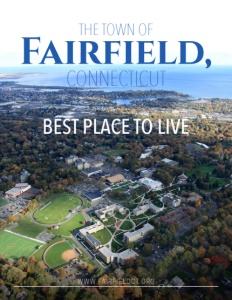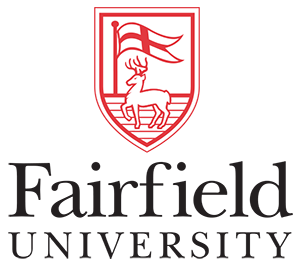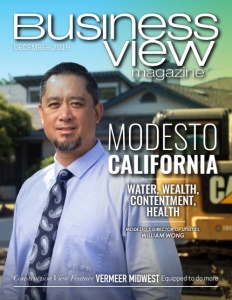The Town of Fairfield, Connecticut
Best place to live
Business View Magazine interviews representatives from the Town of Fairfield, Connecticut, as part of our focus on best practices of American towns and cities.
The Town of Fairfield, Connecticut is located in Fairfield County, along the shoreline of the Long Island Sound, between the cities of Bridgeport and Stamford. Well before European settlers stumbled upon the “fair fields” that Native Americans called Uncoway, the area’s coastal geography and plentiful natural resources supplied several indigenous tribes with game, fish, abundant sweet water, and fertile land to cultivate. The permanent Anglo settlement of Fairfield began in 1639, when Roger Ludlow, an English lawyer, magistrate, military officer, and colonist, laid out four “squares” of land divided by five roadways. This area defined the center of the new settlement, and remains, today, as the Historic Town Green and part of Fairfield’s Historic District, listed on the National Register of Historic Places, with town government buildings, churches, and the surrounding neighborhood complete with exceptional examples of Colonial, Victorian, and Federalist architecture.
Today, Fairfield is a thriving southern New England town of approximately 61,000 residents that is consistently named by Money Magazine as one of the best places to live in the State of Connecticut. “It’s a phenomenal location with two highways, three train stations, and an hour or so drive from five different airports,” says First Selectman, Mike Tetreau. “So, you can’t find a more convenient location from that standpoint.” “Transportation access is key,” adds Mark S. Barnhart, Fairfield’s Director of Community & Economic Development. “You can access five international airports within a two-hour drive of the town. We find a lot of companies with European roots are locating in this area, including Fairfield, because it does provide convenient travel to and from Europe from the airports in the area.”
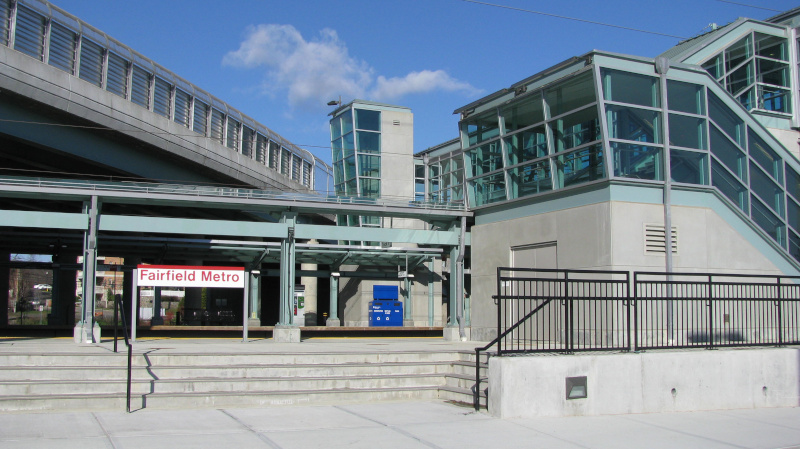
New FMC Train Station
Tetreau points out more of the town’s attractions: “We’ve got a dynamic downtown and many natural amenities: five beaches and two harbors, along with a tremendous amount of open space; two public golf courses; three private golf courses; three libraries; and an active Parks and Recreation Department with a wide range of activities, not only for our youth, but also for adults. Fairfield has something for everyone, along with a tremendous historic character and charm that completes the picture.”
Lately, the Town of Fairfield has placed a significant focus on economic development and it is working closely with some of its nearby municipalities in Fairfield County, specifically Greenwich, Stamford, Norwalk, and Westport, in order to market itself to potential new businesses. “The five of us got together and realized there is no county government in Connecticut, so no one is promoting Fairfield County. We also realized that Fairfield County is the one county that’s growing in the State of Connecticut in the past five years. It has 25 percent of the jobs, and it generates 40 percent of the income tax revenues for the state. So, Fairfield County is really the engine that is driving the State of Connecticut, right now. And we need to promote that. We know that counties in New York and New Jersey are promoting themselves, and our message is simple: If you want to locate in the tri-state area, Fairfield County is the place. We have a lower tax rate, a lower cost of living, and a higher quality of life. We have tremendous assets in terms of transportation, and there is a range of lifestyles and demographics here that either support your business or provide housing and living opportunities for your employees.”
Barnhart explains that, currently, about ten percent of the town’s tax base comes from its commercial sector. Two of its largest employers are the Bigelow Tea Company, which has its headquarters in town, and RBC Heim, a manufacturer of aerospace and other industrial applications. “The major sectors, I call ‘eds, meds, and beds,” he quips. “We have two universities here, Sacred Heart University and Fairfield University, both of which are growing and making significant investments in their on-campus facilities and infrastructure. Sacred Heart has just recently opened an innovation center in partnership with Verizon to facilitate entrepreneurship and to grow new small businesses in the area. It’s the first partnership that Verizon has participated in on an on-campus facility, so we have great hopes for that partnership.”
“Having two universities is a real boon for our town,” Tetreau notes. “When I look at our work with Sacred Heart, we’re kind of redefining ‘town/gown’ relationships on that front. They are adding a pool and an ice rink to their campus, which will be available to town residents, so we’re very excited about that. And both universities are growing at a time when, across the country, the college-age population is in decline and college enrollment is following that trend. Here, both universities are having building sprees, which is a big boon to our town’s building permit fees because they’ve been adding various business schools, nursing schools, as well as dorms on campus, and keeping our building inspectors very busy.”
Barnhart picks up the thread: “The two universities obviously add to the cultural vibrancy of the entire region, and contribute to one of our strengths – our talented workforce. It provides a pipeline to young talent coming out of the universities. You’ll find more finance, IT, and management professionals per capita in Fairfield than you will in many larger metropolitan areas and cities; 62 percent of our population has college or advanced degrees. So, it’s a highly educated and talented workforce.”
The Town of Fairfield, itself, has some major projects going on, some of which are part of its first-ever, town-wide strategic plan. One recently completed project was a decades-long effort to clean up the former Exide Battery plant on Mill River. After ceasing operations on the site in 1981, Exide began removing 30 years of lead contamination under orders from the Department of Energy & Environmental Protection (DEEP). In 2013, unsatisfied with the company’s progress, the Town of Fairfield and the organization, FairPLAN (Fairfielders Protecting Land and Neighborhoods) intervened, calling for improvements to the remediation proposal. Since then, the cleanup operation has dredged more than 20,000 cubic yards of lead-contaminated soil from Mill River, and this past June, DEEP issued Exide a Certificate of Compliance, officially acknowledging the completion of the cleanup project. Exide is reportedly looking to sell the property to an outside buyer for development, and FairPLAN has called upon the property’s would-be buyer and developer to incorporate into its plans for a mixed-use development on the site, a substantial greenway along Mill River, as well as parking and public access to the river for recreation, fishing, and small boat use.
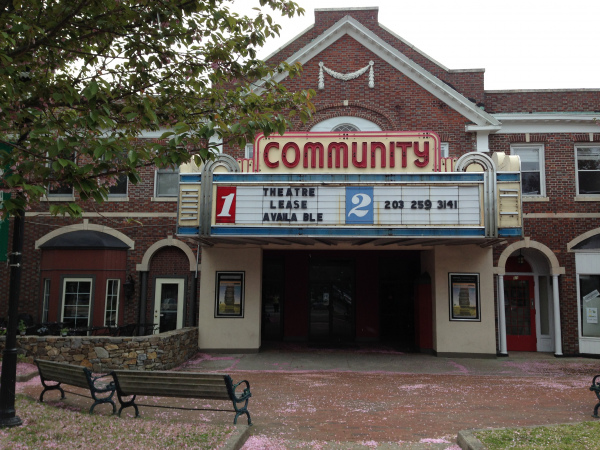
A new project in town is the renovation of the historic Community Theatre in downtown Fairfield. Originally opened as a vaudeville house in 1923, the Theatre changed to an all-film format in 1929, went through several different iterations, and closed for good in 2011. The defunct property is now going to be renovated and repurposed by Sacred Heart University (SHU) and Kleban Properties, who will turn it into a contemporary venue and state-of-the-art theater for the university and the community, while maintaining much of its classical features. “SHU will bring their Performing Arts Center down to the Community Theatre, so we’ll have a completely renovated building and commercial space,” says Tetreau. “There’s one restaurant at ground level there, now, and they’re going to develop the rooftop to make it a real dynamic destination for rooftop dining. That will really be a bright spot for downtown Fairfield, and a boost for our entire downtown. So we’re very excited about that.”
“In addition, on the other side of town, there’s Stratfield Market that has lain dormant for almost a decade, now,” Tetreau adds. “It’s currently undergoing work, as is the whole four corners area it’s located on. We’ve got almost a million dollars worth of renovations going into streetscaping to make that a much more attractive and vibrant location on that side of town.”
Barnhart mentions another notable development project near the Fairfield Metro Center, which opened in December 2011, and is one of the town’s three commuter rail stops on the Metro-North Railroad’s New Haven Line. “We just completed a mixed-use project in that area,” he reports. “101 new residential units over 15,000-sq.-ft. of retail and there’s a second phase currently under construction – 160 units over about 20,000-sq.ft of retail/commercial space with structured parking. The Fairfield Metro Center site, itself, is being planned for about a 350-unit residential, mixed-use development with a hotel and office, as well as ancillary retail on a 12-acre site. So there’s great potential around the Metro Center train station.” In addition, at the Downtown Fairfield station, which also serves as a transfer point for the Fairfield University Shuttle, 200 new residential units are being constructed on a two-acre site. “You can walk out of your apartment and get to the train station in a matter of minutes,” Barnhart announces.
Two demographic cohorts are also being targeted by the town and housing developers – seniors and Millennials. “There’s another project within our downtown core; we are seeing a proposal for 150 units of independent senior living,” says Barnhart. “Our senior population is very vibrant and active and we want to make sure that we provide those opportunities for our seniors, so they can maintain roots in the community they’ve grown up in.”
“The trend, a few years back, was for Millennials to move to bigger cities, specifically New York City,” Tetreau explains. “Now, we’re seeing a trend of Millennials moving out here. They’re looking for a modified city life, and we have a vibrant downtown with restaurants, shops, and entertainment. Fairfield, itself, is the one town in the state where you can walk to the beach, walk to downtown, and walk to the train. So a lot of our neighborhoods are very attractive to Millennials who are looking for a walkable town to reside in. And as Millennials have aged and gotten married and started to have kids, we’re seeing a new focus from that segment on education. And what the suburban towns out here in Fairfield County sell is education – high quality school systems. That is what has always drawn people here – it’s part of our culture, our value set. When you look at Fairfield, 65 cents out of every tax dollar goes to support our school system. So, that’s one of the things that’s helping.”
Finally, Fairfield is serious about sustainability. “When you look at some overall numbers, we were rated number one in the state for our sustainability efforts,” Tetreau relates. “We have made a big push to get to alternative and sustainable fuels. In fact, 25 percent of the town’s electric usage comes from solar power. In addition to that, our residents are also getting in the act; we have over 400 solar panel installations on residential roofs, as part of the Solar Connecticut program. So, it’s really something that’s been a community-wide boon. We also have major initiatives in promoting biking and walking in our town. That includes renovating sidewalks, creating bike lanes, creating shared roadways, and a big initiative on Complete Streets, so that all this is looked at comprehensively.”
“Because we’re a coastal community, we’re looking at issues related to resiliency and sea level rise,” Barnhart adds. “And we’ve accessed federal and state grants to facilitate that work. We’ve looked at our downtown core, particularly as it relates to the implementation of green infrastructure, and we have rather stringent requirements in place to provide for better stormwater retention. And we just completed a project in the downtown to provide additional capacity to retain water, so as to help alleviate some local flooding. We’re seeing more flooding, both in terms of frequency and intensity, so we’re trying to stay ahead of that, as well.”
Access to all forms of transportation, a focus on education, a plethora of housing options, an abundance of city amenities amidst natural beauty, and a dedication to a sustainable lifestyle – no wonder the Town of Fairfield is considered “a best place to live.”
AT A GLANCE
WHO: The Town of Fairfield, Connecticut
WHAT: A town of 61,000
WHERE: Along the shoreline of the Long Island Sound in Fairfield County, Connecticut
WEBSITE: www.fairfieldct.org
PREFERRED VENDORS
Fairfield University – Fairfield.edu
A modern, Jesuit Catholic university rooted in a storied intellectual and spiritual tradition, Fairfield University embraces a liberal humanistic approach to education, fostering critical thinking and religious values to over 5,000 undergraduate and graduate students. The University’s five colleges prepare students for success after graduation through innovative learning aimed at educating the whole person.

